การรั่วไหลของวาล์ว Deluge: UL-260 เทียบกับ ANSI/FCI 70-2
จากมุมมองท…
คุณอัปเดต BERMAD Connect แล้วหรือยัง? ตรวจสอบเลย
อัปเดต BERMAD Connect วันนี้! ตรวจสอบเลย
BERMAD > ศูนย์ความรู้ > บล็อก > ข้อกำหนดของ NFPA 13, UL, FM และผู้ผลิตสำหรับวาล์วระบายแรงดันที่ติดตั้งอยู่ด้านท้ายน้ำของวาล์วลดแรงดัน

โดย
การออกแบบระบบป้องกันอัคคีภัยเป็นกระบวนการที่ซับซ้อนซึ่งต้องใช้แนวทางแบบบูรณาการและความเชี่ยวชาญในระดับสูง ผู้ออกแบบและวิศวกรระบบจำเป็นต้องคำนึงถึงปัจจัยจำนวนมาก พร้อมทั้งต้องเข้าใจและปฏิบัติตามมาตรฐานที่เข้มงวดทั้งในระดับท้องถิ่น ระดับภูมิภาค และระดับสากล
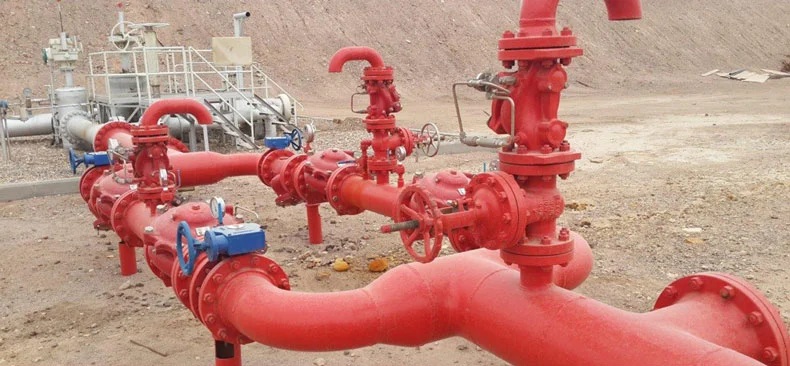
ในบทความนี้ เราจะพูดถึงหนึ่งในชิ้นส่วนของระบบเหล่านี้ – สำหรับการติดตั้งระบบสปริงเกลอร์ มาตรฐาน UL และ FM และคำแนะนำจากผู้ผลิต, วาล์วระบายแรงดัน จำเป็นต้องติดตั้งที่ทางออก ด้านขาออกของวาล์วลดแรงดันทั้งหมดที่ติดตั้งไว้ วาล์วลดแรงดัน ซึ่งเป็นส่วนหนึ่งของอุปกรณ์ควบคุมแรงดันในระบบป้องกันอัคคีภัย
วาล์วลดแรงดันถูกใช้เพื่อปกป้องท่อ อุปกรณ์วัด และอุปกรณ์ต่าง ๆ ที่ไวต่อแรงดันในระบบป้องกันอัคคีภัยจากสภาวะแรงดันเกินที่ปลายทาง ในสภาวะปกติ วาล์วเหล่านี้สามารถทำหน้าที่นี้ได้อย่างดี อย่างไรก็ตาม ในบางกรณีที่เกิดสถานการณ์ไฮดรอลิกที่ผิดปกติ วาล์วลดแรงดันอาจไม่สามารถรักษาแรงดันขาออกตามที่ตั้งไว้ได้ชั่วขณะ
มีสาเหตุทั่วไปอยู่ไม่กี่ประการที่ทำให้เกิดเหตุการณ์แรงดันเกินซึ่งเกี่ยวข้องกับวาล์วลดแรงดัน:
แม้ว่าเหตุการณ์เหล่านี้จะเกิดขึ้นไม่บ่อยนัก แต่ก็สามารถเกิดขึ้นได้ และระบบจำเป็นต้องเตรียมพร้อมเพื่อป้องกันสภาวะแรงดันเกินเมื่อเกิดเหตุการณ์ดังกล่าว ด้วยเหตุผลนี้ จึงถือเป็นมาตรฐานที่ได้รับการยอมรับและเป็นข้อกำหนดของหน่วยงานที่เกี่ยวข้องว่าควรติดตั้งวาล์วระบายแรงดันที่ทำงานได้อย่างรวดเร็วไว้ที่ด้านขาออกของวาล์วลดแรงดัน เพื่อเป็นการป้องกันแรงดันที่อาจเพิ่มขึ้นโดยไม่ตั้งใจที่ด้านขาออก
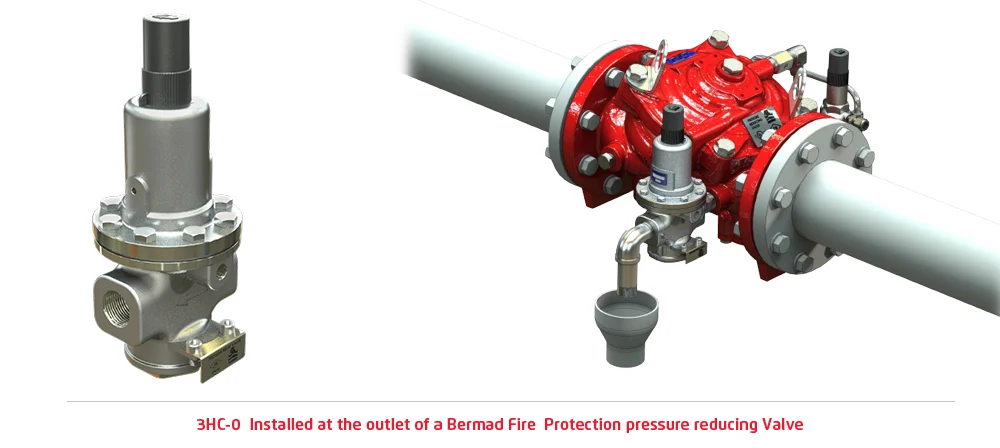
วาล์วระบายแรงดันเป็นอุปกรณ์เพื่อความปลอดภัยที่ออกแบบมาเพื่อระบายแรงดันเกินในระบบป้องกันอัคคีภัยอย่างรวดเร็ว วาล์วระบายแรงดันจะเปิดเมื่อแรงดันน้ำเกินค่าที่ตั้งไว้ล่วงหน้า เพื่อระบายน้ำส่วนเกินออกสู่บรรยากาศหรือบ่อพักน้ำ เมื่อแรงดันน้ำส่วนเกินถูกระบายออกและแรงดันในท่อลดลงต่ำกว่าค่าที่ตั้งไว้ วาล์วระบายแรงดันจะกลับมาปิดสนิทและป้องกันการรั่วซึม
เมื่อเลือกวาล์วระบายแรงดันสำหรับระบบป้องกันอัคคีภัย ควรคำนึงถึงปัจจัยต่อไปนี้:
ตารางขนาดวาล์วระบายแรงดันขั้นต่ำที่แนะนำสำหรับวาล์วลดแรงดัน
| วาล์วลดแรงดัน หรือขนาดท่อ นิ้ว (มม.) | 1.5” (40) | 2″ (50) | 2.5″ (65) | 3” (80) | 4” (100) | 6” (150) | 8” (200) | 10” (250) | 12” (300) | 14″ (350) | 16″ (400) |
| ขนาดวาล์วระบายแรงดันที่แนะนำ นิ้ว (มม.) | 3/4″ (20) | 3/4″ (20) | 3/4″ (20) | 3/4″ (20) | 2″ (50) | 3″ (80) | 3″ (80) | 4″ (100) | 2 x 4″ (2×100) | 2 x 4″ (2×100) | 2 x 4″ (2×100) |
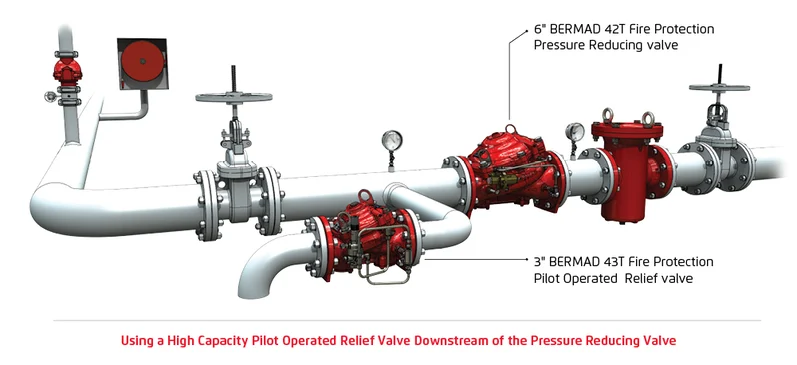
Also bear in mind that because direct-acting relief valves open directly against the main spring, their size and pressure range is limited. The reason for this is that with larger diameters and higher pressures, the spring becomes too big, cumbersome, and uneconomical.
BERMAD นำเสนอลิฟวาล์วระบายแรงดันที่ได้รับการพิสูจน์ในอุตสาหกรรม ซึ่งออกแบบมาโดยเฉพาะสำหรับระบบป้องกันอัคคีภัยขั้นสูงและเป็นไปตามมาตรฐานอุตสาหกรรมล่าสุด โซลูชันเหล่านี้รวมถึง BERMAD FP-3HC-0 ลิฟวาล์วระบายแรงดันแบบทำงานโดยตรง ซึ่งเหมาะอย่างยิ่งสำหรับการควบคุมแรงดันและป้องกันสภาวะแรงดันเกินในระบบป้องกันอัคคีภัยที่ต้องการการระบายแรงดันในปริมาณต่ำ มีวัสดุป้องกันการกัดกร่อนให้เลือกหลากหลาย เพื่อตอบโจทย์ของเหลวและสภาพแวดล้อมที่แตกต่างกัน และด้วยการออกแบบที่แข็งแรงทนทาน จึงมั่นใจได้ถึงอายุการใช้งานที่ยาวนานและเชื่อถือได้
BERMAD FP-43T และ FP-430-UF วาล์วระบายแรงดันแบบไพล็อต เป็นวาล์วโกลบชนิดอีลาสโตเมอร์ที่ขับเคลื่อนด้วยแผ่นไดอะแฟรมแบบกลิ้ง พร้อมซีลที่แข็งแรงและยืดหยุ่นในตัว ใช้สำหรับป้องกันแรงดันเกินในท่อขนาดใหญ่ การไหลของน้ำในระบบป้องกันอัคคีภัย และผลิตจากวัสดุและการเคลือบผิวหลากหลายชนิด เพื่อตอบสนองต่อข้อกำหนดของเทศบาล อุตสาหกรรม งานบนบก และงานนอกชายฝั่งทุกประเภท
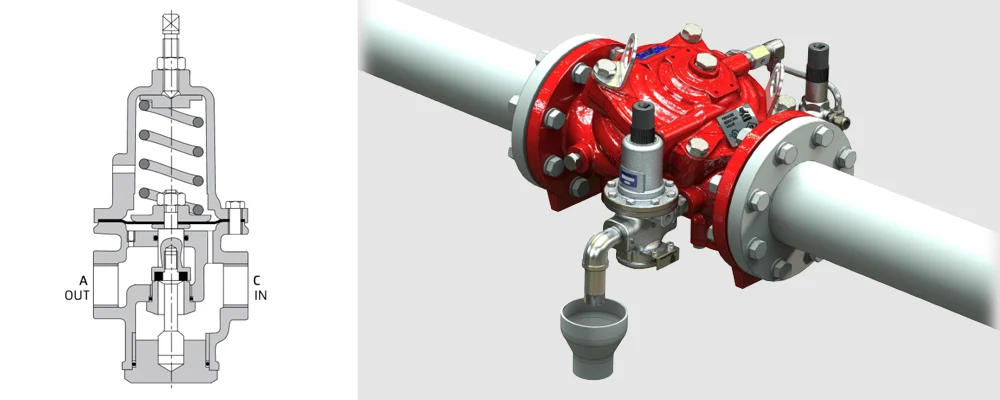
หากต้องการทราบข้อมูลเพิ่มเติมเกี่ยวกับวาล์วระบายแรงดันและผลิตภัณฑ์ป้องกันอัคคีภัยอื่น ๆ ของเรา โปรดเยี่ยมชมเว็บไซต์ของเรา.
วิศวกรของ BERMAD พร้อมให้คำแนะนำจากผู้เชี่ยวชาญเกี่ยวกับการใช้งานและระบบป้องกันอัคคีภัย หากต้องการเรียนรู้เพิ่มเติม คลิกที่นี่ เพื่อติดต่อกับตัวแทน BERMAD ในภูมิภาคของคุณ
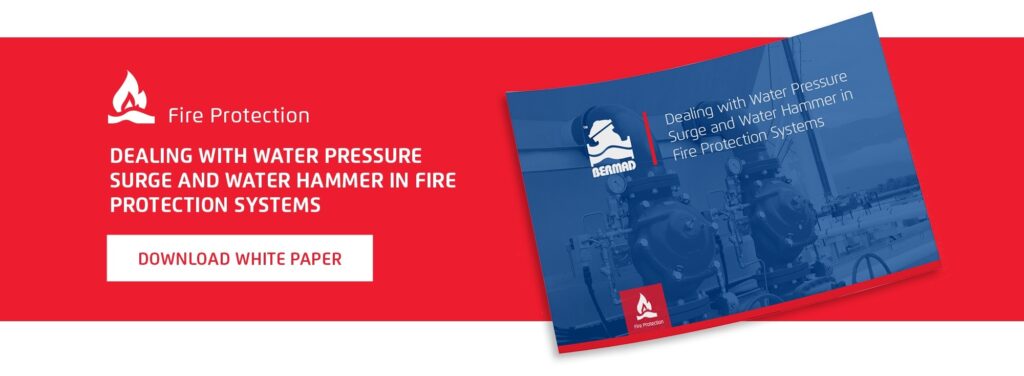


What are t…
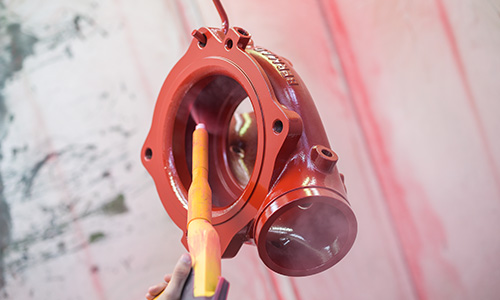

Yara ต้องก…


ต้องการรายละเอียดเพิ่มเติมหรือไม่?
มีคำถามหรือไม่? เราพร้อมช่วยเหลือคุณ

เราได้รับอีเมลของคุณแล้ว ตอนนี้เรามาทำให้มันเป็นเรื่องส่วนตัวกันดีกว่า...
